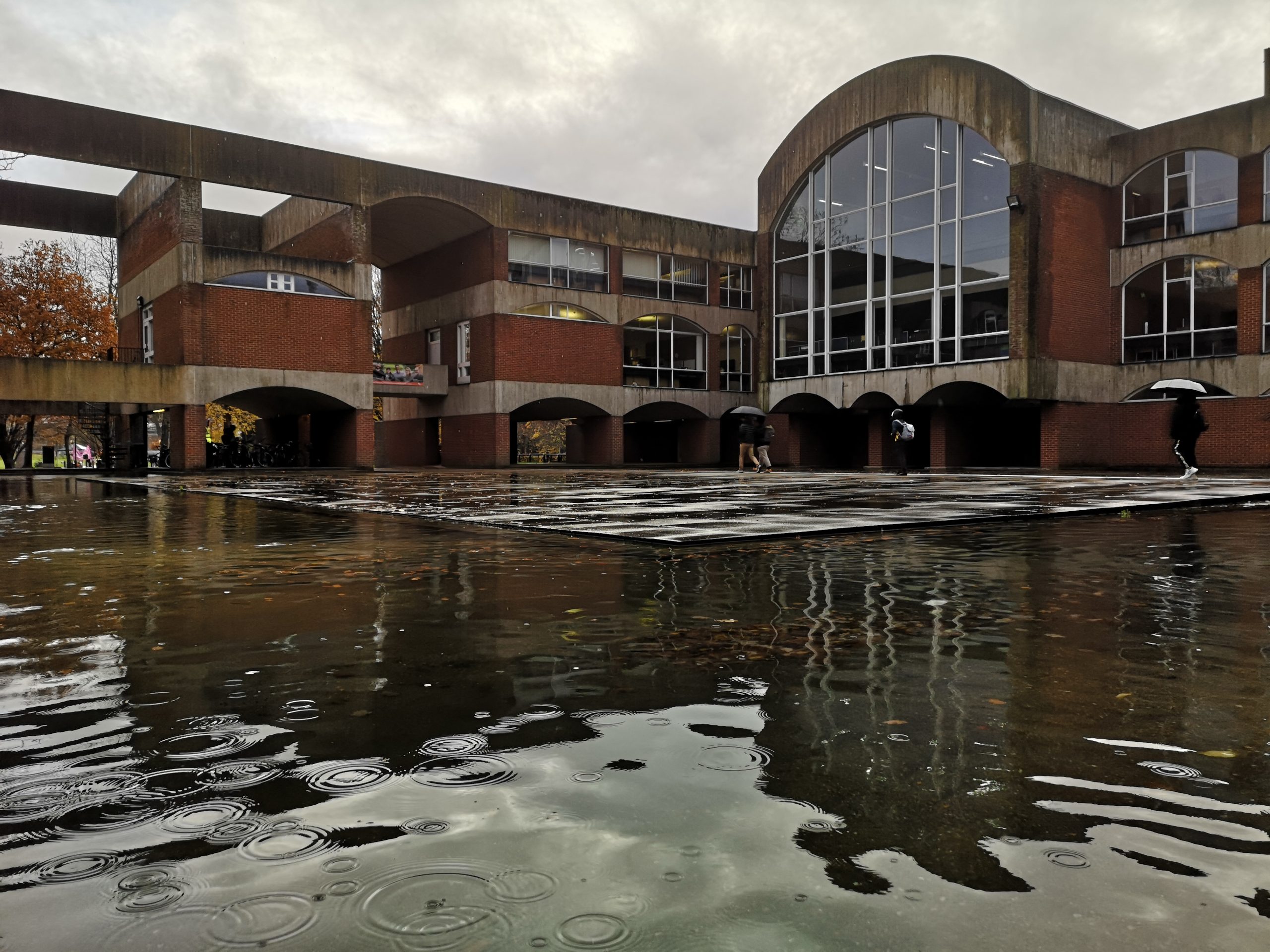By Alana Harris
As the observant amongst us will have seen, the previously empty moat surrounding Falmer square has been filled with water. Many may be intrigued over the function of said moat, which until now has been left empty since 2015.
Falmer House was designed by Scottish architect Sir Basil Spence in October 1962. Sir Basil Spence and partners were commissioned to design a new wave of utopian universities to be built in Britain after the Second World War. Falmer house was to be the first part of the campus to be finished and by 1971, 17 on-campus buildings had been built and given several awards, including a medal from the Royal Institute of British Architects. The moat is a design element implemented by Spence in order for the water to reflect contrasts of varying light patterns coming from the concrete arch structures above it.
The decision to re-fill the moat was part of the University’s plan to ensure the maintenance of the campus’s architectural legacy, a project it has been working on collaboratively with Historic England, Brighton & Hove City Council and other local associations. According to the university the refilling of the moat has restored it “to its 1960s glory”.
Despite Spence’s purely artistic intentions for the moat, in its hay day it was reported to have been used by the caving society as the prefect practice location as well as alumni branding it a hub for drunken accidents, with one past student commenting “If you haven’t fallen in it at least once, are you even an alumni?” Nevertheless, the restoration has seen many positive responses, with numerous previous graduates nostalgically praising the renewal and current students viewing it as an improvement from the empty moat. Thomas Kennedy, a Sussex Geography student believes the change to be “a vast improvement from the previously empty concrete structure”.
The task of refilling the area was completed by the Sussex Estates and Facilities (SEF) team and required them to get the previously non-functioning electric pump up and running again. The water in the moat will be treated by the SEF team with wildlife friendly chemicals in order to maintain it and prevent any deterioration. Dan Hore, Partnership Director of SEF, ‘There’s more work involved in maintaining a moat than you might think – especially one in a building that has been listed since 1993 for its ‘exceptional’ architectural interest. Our aim has been to bring the Falmer House moat back to how it’s designed to be, while ensuring that it’s manageable for the grounds team to maintain.”

